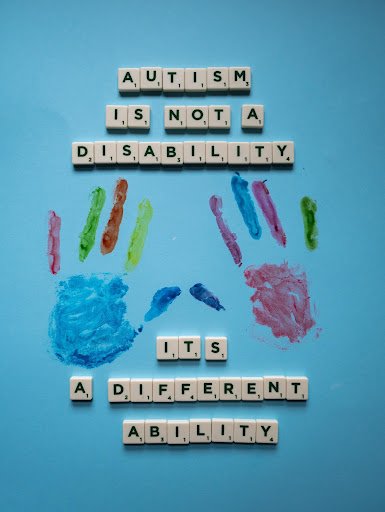The Beauty Behind Autism
By Zeph Yang
For most, autism is a disorder that puts kids or adults at a disadvantage against their peers and society as a whole. It is not often that people with autism can operate on an average level of daily living, in comparison to neuro-typical humans. According to a case done in Poland by Nicolaus Copernicus University, “Autism brings many difficulties which influence the level of social roles in consequences leading to a social isolation” (Natalia Gumińska et al. / Procedia - Social and Behavioral Sciences 174 (2015, 576 – 583). Not many people realize how much social pressure and lack of awareness, in a society, can cause negative and destructive behaviors. Focusing on education about autism and pushing resources regarding autism, and alike. Only once we are aware, can we then start helping autistic people feel like “normal” human beings.
One of the greatest disadvantages I have seen for people diagnosed with autism is a lack of language intelligence and social reception. When working as a behavior therapist, I come across many clients who are around 6-10 years old and are familiar with the social aspect of our environment. Many of the clients are not able to communicate verbally or struggle with using two-plus word demands/requests. For the clients who are unable to communicate verbally with the therapists, they are provided with AAC devices (augmentative and alternative communication devices). These devices display certain images and sounds that the client is correlating certain actions/words with. Acknowledging this issue and knowing how to approach it with the right tools, and mindset will allow autistic people to feel better understood within society and within their environment.
There are also many common stereotypes about autism that have usually stemmed from the popularization of individuals like movie stars, or from the misconception of other disorders. The stereotype of autistic people looking different is incorrect because autism has no effect on physical appearance. “Looking autistic”, is often confused with the traits of people suffering from Down Syndrome, and this misconception can create a deep social isolation effect within a community. Autism is sometimes correlated with Asperger’s Syndrome, by some professionals, in order to define certain presentations of autism. This correlation has a negative effect on autism because of how much stigma and stereotypes can emit from just this one label, “Aspergers”. According to the Autism Learning Partners, “In fact, as of 2013, Asperger’s is no longer recognized as an official disorder according to the Diagnostic and Statistical Manual of Mental Disorders 5 (DSM-5).” Providing more insight into autism to people who are unaware or uninformed, is a small way of providing big differences in the way autistic people feel in our society.
What people are also unaware of is the fact that autism works on a spectrum/range and that no one person with autism is the same as the others. Autism does not define anybody; however, it does play a huge role in affecting one’s behavior and actions. However, not everyone who has autism shares the same issues or has the same level of difficulty in one area of expertise. Some behaviors that autistic people portray aren’t always from the result of being autistic, but sometimes from external factors. These factors could be trauma, bullying, neglect, lack of acceptance/safety, etc. Generalizing people with autism can be very offensive to some and can negatively affect one’s social functioning.
According to Autism Speaks, “In 2021, the CDC reported that approximately 1 in 44 children in the U.S. is diagnosed with an autism spectrum disorder (ASD), according to 2018 data.” While autism is very common in the United States, there are still a lot of misconceptions and uneducated people, which creates an unwelcome environment for the autism community. There are some educational centers for kids with autism, and involving a person in these programs early can prove to have major benefits for them. Social functioning is one of the most important reasons for putting a child in these programs. The ability to perform all daily living skills with the independence of an average adult is the goal for most people with autism.
Staying connected and aware of relatives who have autism is a great place to start for someone who has no idea of what autism can be like. For young children, providing special education but giving them the same opportunities as everyone else, is important for developing the feelings of being a regular human being. Autism creates diversity and an opportunity for humans to be more inclusive with each other regardless of differences.
References
Autism Statistics and Facts. (2022). Autism Speaks. https://www.autismspeaks.org/autism-statistics-asd#:%7E:text=Autism%20Prevalence,)%2C%20according%20to%202018%20data.&text=Boys%20are%20four%20times%20more,diagnosed%20with%20autism%20than%20girls.
C. (2021, September 17). Debunking 8 Common Stereotypes of Individuals with Autism (Part One). Autism Learning Partners.
Natalia Gumińska et al. / Procedia - Social and Behavioral Sciences 174 ( 2015 ) 576 – 583 pdf

